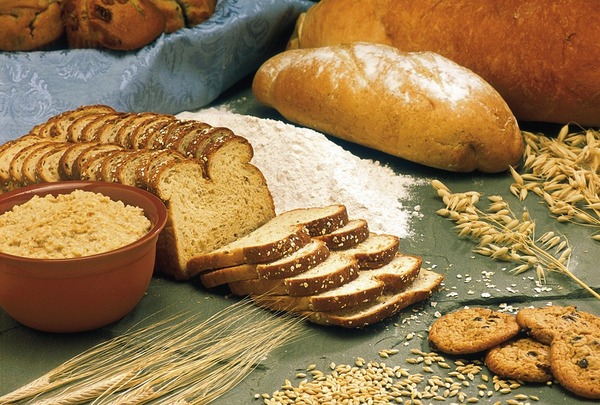Just In
- 7 min ago

- 3 hrs ago

- 4 hrs ago

- 9 hrs ago

Don't Miss
- Finance
 Results, Dividend, Fundraise On April24: Buy Top Bank Stock Amid Rich Valuation, TP Rs 1400: Nomura
Results, Dividend, Fundraise On April24: Buy Top Bank Stock Amid Rich Valuation, TP Rs 1400: Nomura - Sports
 Who Won Yesterday's IPL Match 33? PBKS vs MI, IPL 2024 on April 17: Mumbai Indians Escape Last-Ditched Fight by Punjab Kings To Win
Who Won Yesterday's IPL Match 33? PBKS vs MI, IPL 2024 on April 17: Mumbai Indians Escape Last-Ditched Fight by Punjab Kings To Win - Movies
 Do Aur Do Pyaar OTT Release Date & Platform: When & Where To Watch Vidya Balan’s Film After Theatrical Run?
Do Aur Do Pyaar OTT Release Date & Platform: When & Where To Watch Vidya Balan’s Film After Theatrical Run? - News
 BRS Chief K Chandrasekhar Rao Slams BJP, Says K Kavitha's Arrest Is Vendetta Politics
BRS Chief K Chandrasekhar Rao Slams BJP, Says K Kavitha's Arrest Is Vendetta Politics - Automobiles
 Aprilia RS 457 Accessories: A Detailed Look At The Prices
Aprilia RS 457 Accessories: A Detailed Look At The Prices - Education
 Karnataka SSLC Result 2024 Soon, Know How to Check Through Website, SMS and Digilocker
Karnataka SSLC Result 2024 Soon, Know How to Check Through Website, SMS and Digilocker - Technology
 Nothing Ear, Ear a With ANC, Up to 42.5 Hours of Battery Launched; Check Price and Availability
Nothing Ear, Ear a With ANC, Up to 42.5 Hours of Battery Launched; Check Price and Availability - Travel
Telangana's Waterfall: A Serene Escape Into Nature's Marvels
8 Best Lifestyle Changes To Help Control Diabetes
Every year, the month of November is observed as the Diabetes Awareness Month - celebrated globally to raise awareness about both Type 1 and Type 2 diabetes. The theme of World Diabetes Day and diabetes awareness month 2019 is 'Family and Diabetes'.
Diabetes Awareness Month 2019 also aims to focus on the link between diabetes and cardiovascular disease. On this awareness month, let us take a look at the different ways through which your lifestyle can make a change.
According to a study conducted by the Physicians Committee for Responsible Medicine, the blood sugars, weight and cholesterol levels of diabetics can be lowered by adopting various preventive measures. Some studies have claimed that dietary interventions are effective for diabetes management because unlike medications, they have been shown a marked improvement [1] . Plant-based diets are beneficial to treat diabetes, especially type 2 as it can help reduce the fat inside cells.

Plant-based diets also benefit the body weight, lipid control, glycaemic control and blood pressure. This, in turn, help in developing your insulin resistance and sensitivity [2] .
Understanding which lifestyle choices and dietary choices he/she should make are vital among the ways to keep diabetes under control.
Doctors advise lifestyle changes to individuals at higher risk of diabetes and those who are newly diagnosed with type 2, in order to manage and control the condition [3] .
Lifestyle Changes To Control Diabetes
1. Eat healthy
In order to control your diabetes, it is critical that you follow a healthy diet comprised of carbohydrates, fibre, omega-3 rich fish and good fats. During digestion, simple carbohydrates (fruits, milk, and milk products, candies, syrups and soft drinks) and complex carbohydrates (peas, beans, whole grains and vegetables) break down into blood glucose. Complex carbohydrates get slowly absorbed into the body, avoiding spikes in the blood sugar levels. Focus on the whole grains, vegetables and fruits that will minimize the risk of diabetes mellitus [4] .

Fibre helps in digesting the food you consumed and aids in controlling the blood sugar levels. Studies have shown that a relatively low intake of dietary fibre significantly increases the risk of type-2 diabetes. Consume foods that have high fibre content, such as fruits, legumes, vegetables and wheat bran [5] . Avoid sugar-sweetened beverages that can cause blood sugar to spike quickly.
Fish like codfish and tuna have less total fat, saturated fat and cholesterol than meat. Salmon, mackerel, tuna and sardines are rich in omega-3 fatty acids, which promote heart health by lowering blood fats called triglycerides [6] .

Likewise, foods containing monounsaturated fats and polyunsaturated fats can help lower the risk of type-2 diabetes. Good fats include avocados, peanut oil, olive oil, walnuts, olives, cashews, pecans and peanuts [7] . And always make sure to coordinate your meals with the diabetes medication [8]
2. Learn about carbohydrate counting & portion sizes
The key to maintaining diabetes management is learning how to count carbohydrates. Carbohydrates often have an impact on your blood sugar levels and for people with mealtime insulin, it's necessary to know the amount of carbohydrates in your food as it will help you in getting the correct amount of insulin [9] .
3. Ensure well-balanced meals
To maintain the insulin levels, plan for every meal to have a good mix of fruits, vegetables, protein and healthy fats. It's very important to pay attention to the types of carbohydrates you opt for. Some carbohydrates like vegetables, whole grains and fruits are low in carbohydrates and contain fibre that helps keep your blood sugar levels stable [10] . It's best that you talk to your doctor about the best food choices and the appropriate balance of food types.
4. Exercise
Physical activity is another important lifestyle change to be adopted into your diabetes management plan. When you start exercising, your muscles use the sugar for energy, thereby helping your body use insulin more efficiently [11] . You can go out for walking, running or skipping exercises, also like activities such as indulging in household work or gardening [12] .

5. Stop smoking
Using tobacco and tobacco products while dealing with diabetes can be extremely hazardous to your health, especially in the case of individuals suffering from type 2 diabetes [13] . It can also increase your chance of developing health problems like heart disease, eye disease, stroke, kidney disease etc.
6. Check your feet regularly
Having elevated blood sugar levels can damage nerves in your feet which can eventually leave you unable to feel blisters or any other injuries. It is better to start with daily foot checks, as it will help you understand whether the condition is elevating or not [14] .

7. Control alcohol intake
Consuming large quantities or even more than one glass of alcohol per day can cause your blood sugar levels to spike too high, making the condition worse. As studies point out, it is always easier to control your blood sugar levels in a body without beer, wine or any alcohol content. That is, alcohol can hike as well as decline your blood sugar levels - causing complications [15] .
8. Get regular check-ups
A dietician is a valuable resource in your attempt to keep diabetes in control. They can help you set up a meal plan which includes several days' worth of sample meals and snacks according to a person's age, weight, activity level and medications [16] . The plan is made in a way that fits your daily routine. Along with the dietician, see your doctor at least twice a year [17] .

Along with these lifestyles, some of the other steps one could adopt are losing weight because excess weight can make diabetes symptoms worse and losing weight help regulate blood sugar levels and improve insulin resistance [18] . The other important factors are getting the right amount of sleep, managing emotional [19] and physical stress (which produce hormones that can worsen insulin resistance), and getting support from your family and friends, as well as health care professionals [20] to help make the journey a practical and easier one.
- [1] Tuomilehto, J., Lindström, J., Eriksson, J. G., Valle, T. T., Hämäläinen, H., Ilanne-Parikka, P., ... & Salminen, V. (2001). Prevention of type 2 diabetes mellitus by changes in lifestyle among subjects with impaired glucose tolerance.New England Journal of Medicine,344(18), 1343-1350.
- [2] Torgerson, J. S., Hauptman, J., Boldrin, M. N., & Sjöström, L. (2004). XENical in the prevention of diabetes in obese subjects (XENDOS) study: a randomized study of orlistat as an adjunct to lifestyle changes for the prevention of type 2 diabetes in obese patients.Diabetes care,27(1), 155-161.
- [3] Wing, R. R., Goldstein, M. G., Acton, K. J., Birch, L. L., Jakicic, J. M., Sallis, J. F., ... & Surwit, R. S. (2001). Behavioral science research in diabetes: lifestyle changes related to obesity, eating behavior, and physical activity.Diabetes care,24(1), 117-123.
- [4] Koenigsberg, M. R., Bartlett, D., & Cramer, J. S. (2004). Facilitating treatment adherence with lifestyle changes in diabetes.American Family Physician,69(2), 309-324.
- [5] Knowler, W. C., Barrett-Connor, E., Fowler, S. E., Hamman, R. F., Lachin, J. M., Walker, E. A., & Nathan, D. M. (2002). Reduction in the incidence of type 2 diabetes with lifestyle intervention or metformin.The New England journal of medicine,346(6), 393-403.
- [6] Sjöström, L., Lindroos, A. K., Peltonen, M., Torgerson, J., Bouchard, C., Carlsson, B., ... & Sullivan, M. (2004). Lifestyle, diabetes, and cardiovascular risk factors 10 years after bariatric surgery.New England Journal of Medicine,351(26), 2683-2693.
- [7] Diabetes Prevention Program Research Group. (2002). Reduction in the incidence of type 2 diabetes with lifestyle intervention or metformin.New England journal of medicine,346(6), 393-403.
- [8] Lindström, J., Ilanne-Parikka, P., Peltonen, M., Aunola, S., Eriksson, J. G., Hemiö, K., ... & Louheranta, A. (2006). Sustained reduction in the incidence of type 2 diabetes by lifestyle intervention: follow-up of the Finnish Diabetes Prevention Study.The Lancet,368(9548), 1673-1679.
- [9] Hamman, R. F., Wing, R. R., Edelstein, S. L., Lachin, J. M., Bray, G. A., Delahanty, L., ... & Regensteiner, J. (2006). Effect of weight loss with lifestyle intervention on risk of diabetes.Diabetes care,29(9), 2102-2107.
- [10] Herder, C., Peltonen, M., Koenig, W., Sütfels, K., Lindström, J., Martin, S., ... & Valle, T. T. (2009). Anti-inflammatory effect of lifestyle changes in the Finnish Diabetes Prevention Study.Diabetologia,52(3), 433-442.
- [11] Arambepola, C., Ricci-Cabello, I., Manikavasagam, P., Roberts, N., French, D. P., & Farmer, A. (2016). The impact of automated brief messages promoting lifestyle changes delivered via mobile devices to people with type 2 diabetes: a systematic literature review and meta-analysis of controlled trials.Journal of medical Internet research,18(4), e86.
- [12] Riccardi, G., Vitale, M., & Giacco, R. (2018). Treatment of Diabetes with Lifestyle Changes: Diet.Diabetes. Epidemiology, Genetics, Pathogenesis, Diagnosis, Prevention, and Treatment, 1-16.
- [13] Chong, S., Ding, D., Byun, R., Comino, E., Bauman, A., & Jalaludin, B. (2017). Lifestyle changes after a diagnosis of type 2 diabetes.Diabetes Spectrum,30(1), 43-50.
- [14] Koivusalo, S. B., Rönö, K., Klemetti, M. M., Roine, R. P., Lindström, J., Erkkola, M., ... & Andersson, S. (2016). Gestational diabetes mellitus can be prevented by lifestyle intervention: the Finnish Gestational Diabetes Prevention Study (RADIEL): a randomized controlled trial.Diabetes care,39(1), 24-30.
- [15] Kriska, A., El Ghormli, L., Copeland, K. C., Higgins, J., Ievers‐Landis, C. E., Levitt Katz, L. E., ... & TODAY Study Group. (2018). Impact of lifestyle behavior change on glycemic control in youth with type 2 diabetes.Pediatric diabetes,19(1), 36-44.
- [16] Colberg, S. R., Sigal, R. J., Yardley, J. E., Riddell, M. C., Dunstan, D. W., Dempsey, P. C., ... & Tate, D. F. (2016). Physical activity/exercise and diabetes: a position statement of the American Diabetes Association.Diabetes care,39(11), 2065-2079.
- [17] Chen, L., Pei, J. H., Kuang, J., Chen, H. M., Chen, Z., Li, Z. W., & Yang, H. Z. (2015). Effect of lifestyle intervention in patients with type 2 diabetes: a meta-analysis.Metabolism,64(2), 338-347.
- [18] Franz, M. J., Boucher, J. L., Rutten-Ramos, S., & VanWormer, J. J. (2015). Lifestyle weight-loss intervention outcomes in overweight and obese adults with type 2 diabetes: a systematic review and meta-analysis of randomized clinical trials.Journal of the Academy of Nutrition and Dietetics,115(9), 1447-1463.
- [19] Nilsen, V., Bakke, P. S., Rohde, G., & Gallefoss, F. (2015). Is sense of coherence a predictor of lifestyle changes in subjects at risk for type 2 diabetes?.public health,129(2), 155-161.
- [20] Huang, X. L., Pan, J. H., Chen, D., Chen, J., Chen, F., & Hu, T. T. (2016). Efficacy of lifestyle interventions in patients with type 2 diabetes: a systematic review and meta-analysis.European journal of internal medicine,27, 37-47.
-
 healthExclusive: World Oral Health Day 2024: Doctor Shares How Diabetic Patients Can Maintain Their Oral Health
healthExclusive: World Oral Health Day 2024: Doctor Shares How Diabetic Patients Can Maintain Their Oral Health -
 healthWhat Is VIP? It Is Not What You Think! This One Is Connected To Blood Glucose, Here's What You Need To Know
healthWhat Is VIP? It Is Not What You Think! This One Is Connected To Blood Glucose, Here's What You Need To Know -
 pregnancy parentingWhat Are The 4 Must Have Vitamins For Kids With Diabetes?
pregnancy parentingWhat Are The 4 Must Have Vitamins For Kids With Diabetes? -
 healthDoes This Everyday Cooking Ingredient Trigger Diabetes?
healthDoes This Everyday Cooking Ingredient Trigger Diabetes? -
 healthRoller Coaster Effect In Diabetes: Why Does My Blood Sugar Level Go Up And Down, How To Stop It
healthRoller Coaster Effect In Diabetes: Why Does My Blood Sugar Level Go Up And Down, How To Stop It -
 healthSinger Shakira Loves These 2 Indian Sweets! How To Make It Diet-Friendly?
healthSinger Shakira Loves These 2 Indian Sweets! How To Make It Diet-Friendly? -
 healthWorld Diabetes Day 2023: 3 Weird Things That Can Put You At Risk Of Developing Diabetes
healthWorld Diabetes Day 2023: 3 Weird Things That Can Put You At Risk Of Developing Diabetes -
 healthWorld Diabetes Day 2023: Daily Habits That Make One At Risk Of Diabetes
healthWorld Diabetes Day 2023: Daily Habits That Make One At Risk Of Diabetes -
 wellnessWorld Diabetes Day 2023: Avoid These Common Mistakes When Testing Blood Sugar Levels
wellnessWorld Diabetes Day 2023: Avoid These Common Mistakes When Testing Blood Sugar Levels -
 healthDiwali 2023: Kalakand Recipe For Diabetic People; It Is Sugar-Free & Keto-Friendly
healthDiwali 2023: Kalakand Recipe For Diabetic People; It Is Sugar-Free & Keto-Friendly -
 healthHow Poor Air Quality During Can Raise Your Diabetes Risk
healthHow Poor Air Quality During Can Raise Your Diabetes Risk -
 healthWhip Up These 3 Diwali Sweets For Your Diabetic Mom Over 40
healthWhip Up These 3 Diwali Sweets For Your Diabetic Mom Over 40


 Click it and Unblock the Notifications
Click it and Unblock the Notifications



